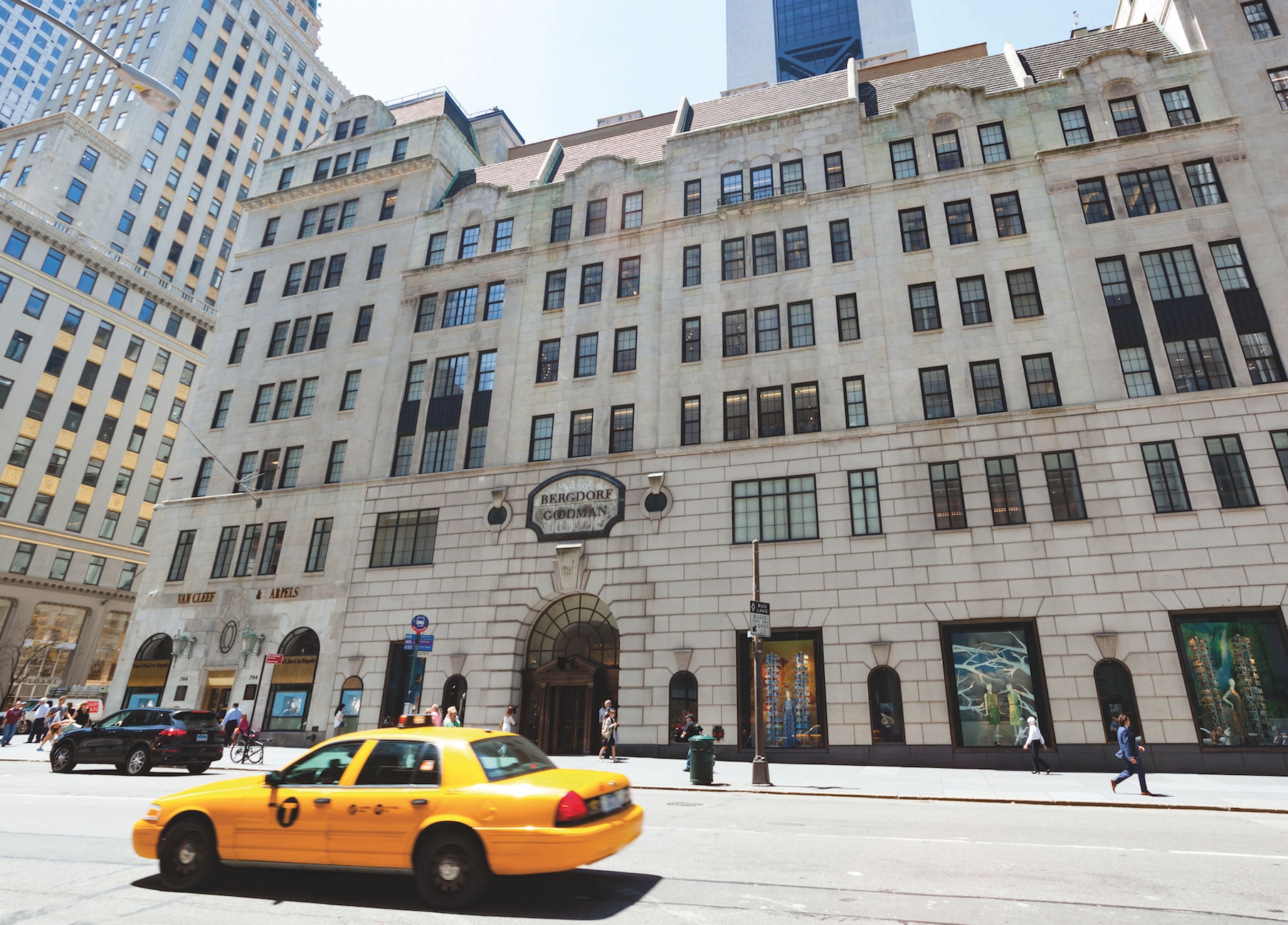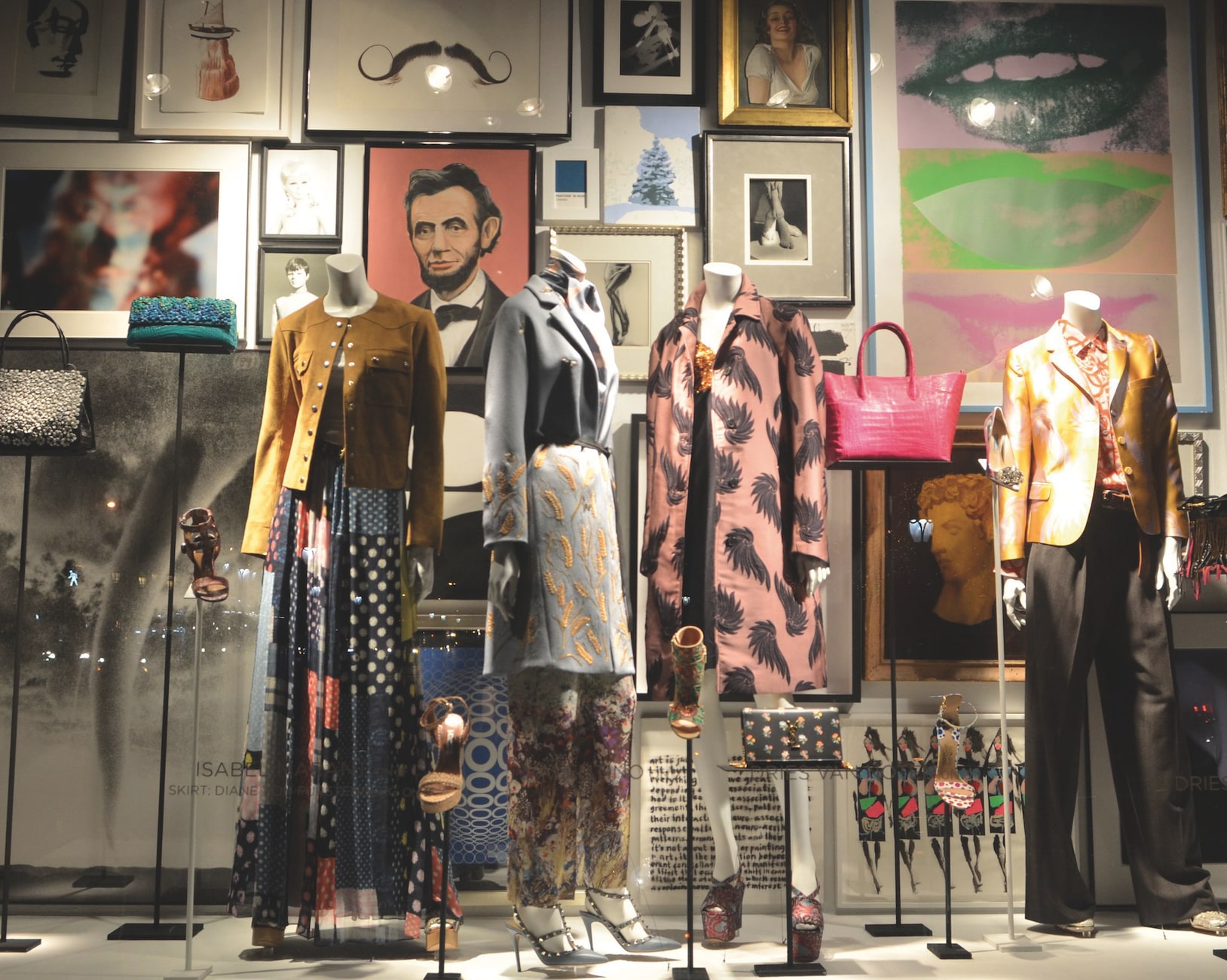Whenever I’m in New York, I always visit Bergdorf Goodman, my favorite department store of the big three in the city. I even prefer their restaurant (BG) to Fred’s (at Barneys). So in early September, when I was in the City, my first retail pit stop was naturally Bergdorf. It was a great time to check out the store as the Autumn Winter collection has started trickling in, and it was a perfect hunting ground to view the pieces up close from their well-curated selection of designers, especially the newer contemporary American designers like Monse, which is difficult to source offline as they are currently not represented in Singapore.
I was excited by the prospect of a fruitful shopping haul. However, within five minutes of entering the ladies apparel section, I knew something was amiss, like a strange phenomenon that I have never experienced before – certainly not when it involves shopping.
I started feeling like a fish out of water. How can that be? Me? Feeling disoriented in a boutique? That’s an embarrassment! Sure, when it comes to shopping, most women will say, “I’m a shopaholic”, and it’s understood to mean, “Yeah, like with most other women who like shopping.” But for some, ‘shopaholic’ is not merely a generalized description that’s to be taken tongue in cheek. It’s more than just a hobby; it’s practically an obsessive- compulsive behavior that borders addiction. I believe I belong to the latter group. Let’s not get into specifics but let’s just say that I know what I’m talking about.
So what was wrong? Well, for starters, I didn’t know where to start! Should I zoom in on brands? Or categories? Wait a minute, where’s the filter option when I need it! Even after I’ve picked an item, I had to ask a sales assistant to check on the availability in my size, which could take up to 20 minutes and that’s just for one item.
I guess I’ve gotten too accustomed to online shopping, which simplified the shopping process and made it as easy as a click of a button to conclude the shopping experience. I can trim down the options to exactly what I’m looking for based on sizes, categories, brands, colors, style and price. It only takes seconds to customize my search options and I’ll know immediately whether my item is available. Furthermore, it’s open 24/7 and I can shop in my PJs, in bed, just before I go to sleep or first thing in the morning before my first cup of coffee.
The inventory is not restricted to what the boutiques’ buyers have selected, but expands to practically a worldwide network of stores. The best part? I can return the items and choose to get my money back, instead of store credits with an expiry date.
So is that the future of retail? Will even more shoppers choose to browse and purchase in cyberspace over brick and mortar stores? Of course, that is not a new point of discussion as the idea is as fresh as collections from two seasons ago (which is like a decade measured in fashion terms). But what is interesting, to me, is how will this affect our buying patterns?
Especially at the top end of the market – the luxury goods, the more expensive purchases. It wasn’t too long ago that one would not be able to find the big brands online, but these days short of only a handful of luxury brands (namely Chanel, Louis Vuitton and Dior) one can find almost everything else there. Often, the prices online are more competitive than prices in Asia (even after factoring in shipping and taxes).
The online sites are very aggressive in running promotions, even for new arrivals, where it is common to receive mailers enticing you to make a purchase with a special 10 percent discount off new items when you download their latest iPad app or introduce a new client or take $700 off a minimum spend of, say, $2,500. (That translates to more than 20 percent discount for new arrivals, which is what some boutiques run as “sales discount” for old collection. Despite the allure of lower prices, wider selections and greater convenience, a majority of shoppers are still reluctant to dip their toes (or wallets) in online shopping, especially not for the high-end goods. There is still the desire to want to touch, feel and try on the items. The perceived risk in returning goods is daunting enough to deter them from buying high priced items online.
The solution? Introduce stylists – a real person that you can communicate with, like a sales assistant in a boutique; set up showrooms in the key cities, which mimics a brick and mortar experience, and organize trunk shows for clients to view the pieces up close as well as the opportunity for the online companies to meet and greet their international clients. It’s converting the online experience into an actual experience.
With all these enhancements, will the new omni channels model be the way forward? The concept of using technology to advance the shopping experience is certainly a major step forward. I often get reminded of items that I have viewed and kept in my cart, a somewhat ‘eye in the sky’ moment, like how did they know I was eyeing that? It may sound intrusive, but that’s what technology does. It turns you into an algorithm, a data to be analyzed. It reveals your spending pattern, your preferences, and your basic demographic profile. This works very well for the retailers as they can streamline their marketing strategies to convert you from a browser to a purchaser. If that is the case, why are the biggest of brands not represented online?
As an avid online shopper, on the contrary, it is the offline experiences that keep me as a loyal client. The level of service I receive from the boutiques and the rapport with the client relationship managers play a huge role in my purchase decisions, especially for luxury goods.
Take for instance a recent sponsored trip to Hong Kong I received from a major French brand. It was the first time they organized a trunk show in Asia for a new collection and since only Hong Kong will host the trunk show, the brand decided to invite the South East Asian clients to Hong Kong to preview the collection. They flew me (and my guest) up to Hong Kong, hosted a dinner for the visiting clients and organized every detail of the trip. Prior to this; I have only bought a handful of stuff from the brand and initially when I realized the prices were lower online, I told myself maybe next time I should just shop online instead. But after the trip, it has completely changed my view of the brand.
I certainly took more notice and am willing to overlook the fact that the prices here are more expensive than what I can find online or overseas. The attention given by the company makes up for the difference in price. At the highest end of the luxury market, pricing is not the most important factor. It’s all about making the clients feel valued and developing the client relationship. Sure, any data analysis programs can send reminders of clients’ birthdays and trigger a process to have the gifts sent out. But it takes actual communication with the client, developed over time, for one to know the precious details that an algorithm will not be able to detect.
I remember receiving a particular coffee-table book for my birthday from my sales assistant, and while its common for big luxury brands to send out flowers and gifts to clients, what made this very special is the fact that she remembered my casual comment (about 10 months before my birthday) that I like this specific coffee-table book from the brand.
I feel valued as a client when the team makes an effort to remember the smallest of details, and even more special when I know I may not be their biggest client but they certainly make me feel as cherished as one. That’s what client relationship is about: like any relationship, its two-way. As much as it’s about how much one spends, more often than not, it’s more than just dollars and cents. Brands appreciate clients who can be suitable unofficial brand ambassadors because they present the image they are trying to convey and more importantly, the clients share a strong mutual rapport with the team, cultivated over time.
Nothing beats interpersonal communication and this is something technology cannot replace. So even if it’s an online business, so long as it’s in the luxury world, efforts must be made to develop a strong client relationship through communication, interaction and shared experiences.
That’s the future of luxury, converting client relationships to friendships and partnerships. When a client is part of the inner circle, a tribe is formed, where membership is not solely based on spending. That is the ultimate luxury, where acquisition cannot be bought.













 Back
Back
